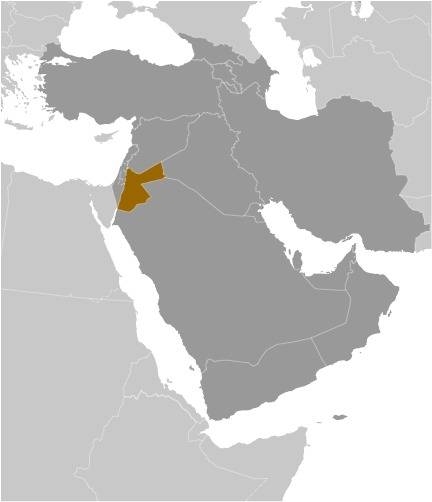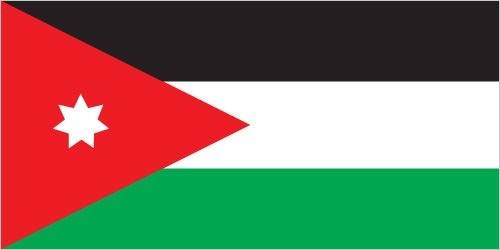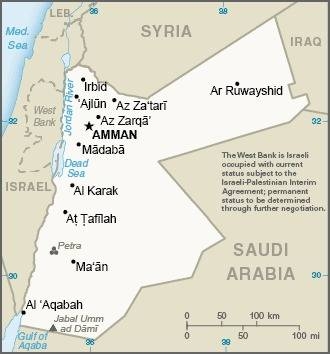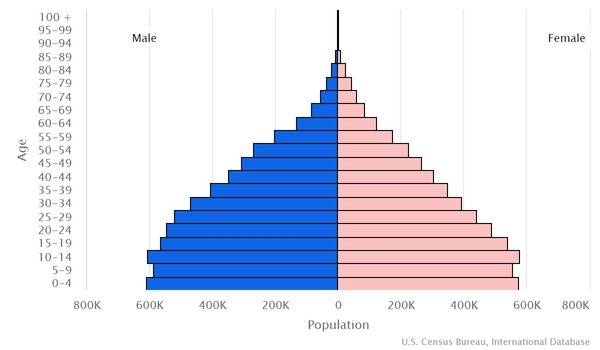Country Summary




Introduction
Background
Following World War I and the dissolution of the Ottoman Empire, the League of Nations awarded Britain the mandate to govern much of the Middle East. Britain demarcated a semi-autonomous region of Transjordan from Palestine in the early 1920s. The area gained its independence in 1946 and thereafter became The Hashemite Kingdom of Jordan.
Geography
Area
total: 89,342 sq km
land: 88,802 sq km
water: 540 sq km
Climate
mostly arid desert; rainy season in west (November to April)
Natural resources
phosphates, potash, shale oil
People and Society
Population
10,998,531 (2022 est.)
Ethnic groups
Jordanian 69.3%, Syrian 13.3%, Palestinian 6.7%, Egyptian 6.7%, Iraqi 1.4%, other 2.6% (includes Armenian, Circassian) (2015 est.)
Languages
Arabic (official), English (widely understood among upper and middle classes)
Religions
Muslim 97.1% (official; predominantly Sunni), Christian 2.1% (majority Greek Orthodox, but some Greek and Roman Catholics, Syrian Orthodox, Coptic Orthodox, Armenian Orthodox, and Protestant denominations), Buddhist 0.4%, Hindu 0.1%, Jewish <0.1%, folk <0.1%, other <0.1%, unaffiliated <0.1% (2020 est.)
Population growth rate
0.81% (2022 est.)
Government
Government type
parliamentary constitutional monarchy
Capital
name: Amman
Executive branch
chief of state: King ABDALLAH II (since 7 February 1999); Heir Apparent Crown Prince HUSSEIN (eldest son of the monarch, born on 28 June 1994)
head of government: Prime Minister Bisher AL-KHASAWNEH (since 7 October 2020)
Legislative branch
description: bicameral National Assembly or Majlis al-'Umma consists of:
Senate or the House of Notables or Majlis al-Ayan (65 seats; members appointed by the monarch to serve 4-year terms)
Chamber of Deputies or House of Representatives or Majlis al-Nuwaab (130 seats; 115 members directly elected in 23 multi-seat constituencies by open-list proportional representation vote and 15 seats for women; 12 of the 115 seats reserved for Christian, Chechen, and Circassian candidates; members serve 4-year terms)
Economy
Economic overview
low growth; high unemployment, especially for youth and women; growing debt; severe COVID-19 disruptions to service and tourism; high current account balances and Five-Year Reform Matrix progress; new business programs; declining remittances
Real GDP (purchasing power parity)
$100.16 billion (2020 est.)
Real GDP per capita
$9,800 (2020 est.)
Agricultural products
tomatoes, poultry, olives, milk, potatoes, cucumbers, vegetables, watermelons, green chillies/peppers, peaches/nectarines
Industries
tourism, information technology, clothing, fertilizer, potash, phosphate mining, pharmaceuticals, petroleum refining, cement, inorganic chemicals, light manufacturing
Exports
$16.29 billion (2019 est.)
Exports - partners
United States 21%, Saudi Arabia 13%, India 8%, Iraq 7%, United Arab Emirates 5%, China 5% (2019)
Exports - commodities
fertilizers, calcium phosphates, packaged medicines, clothing and apparel, phosphoric acid (2019)
Imports
$22.04 billion (2019 est.)
Imports - partners
China 17%, Saudi Arabia 15%, United States 6%, United Arab Emirates 6%, Egypt 5%, India 5% (2019)
Imports - commodities
cars, refined petroleum, natural gas, crude petroleum, clothing and apparel (2019)
Exchange rates
Jordanian dinars (JOD) per US dollar -
Page last updated: Thursday, May 12, 2022
